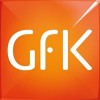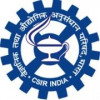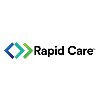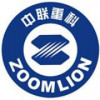Filter interviews by
National Metallurgical Laboratory Senior Research Fellow Interview Questions and Answers
12 Interview questions
Fe-C diagram with peritectic or eutectic lines
Fe-C diagram shows the phases of iron-carbon alloys at different temperatures and carbon concentrations
Peritectic line separates the liquid and solid phases during cooling
Eutectic line separates the two-phase region from the three-phase region
Peritectic reaction occurs when a solid phase reacts with a liquid phase to form a new solid phase
Eutectic reaction occurs when ...
Hardness and strength are related but not the same. Hardness is a measure of resistance to indentation while strength is a measure of resistance to deformation.
Hardness is a measure of a material's ability to resist scratching, cutting, or penetration.
Strength is a measure of a material's ability to resist deformation or fracture under an applied load.
Hardness and strength are related because materials that are ha...
Heat treatment includes annealing, tempering, quenching, and normalizing.
Annealing involves heating the material to a specific temperature and then cooling it slowly.
Tempering involves heating the material to a specific temperature and then cooling it quickly.
Quenching involves heating the material to a specific temperature and then cooling it rapidly.
Normalizing involves heating the material to a specific tempera...
Heat treatments include annealing, tempering, quenching, and case hardening. Each process has unique properties and uses.
Annealing involves heating and slowly cooling to soften metal and improve ductility.
Tempering involves heating and cooling to increase toughness and reduce brittleness.
Quenching involves rapid cooling to increase hardness and strength.
Case hardening involves adding a hard outer layer to a softer...
The diameter of DI pipes used during the continuous casting process varies depending on the specific application.
The diameter of DI pipes used in continuous casting can range from 100mm to 1000mm or more.
The diameter is determined by factors such as the size of the casting machine, the type of metal being cast, and the desired output.
For example, a smaller diameter pipe may be used for casting smaller products lik...
Strength and hardness are related but not the same. Strength is the ability to withstand force while hardness is resistance to deformation.
Strength refers to the ability of a material to withstand an applied force without breaking or deforming.
Hardness refers to the resistance of a material to deformation, scratching, or abrasion.
A material can be strong but not hard, such as rubber, or hard but not strong, such a...
The temperature range for various heat treatments in metallurgy varies depending on the specific process.
Annealing temperature range: 300-1200°C
Quenching temperature range: Room temperature to 200°C
Normalizing temperature range: 800-950°C
Austempering temperature range: 250-450°C
Other heat treatments have their own specific temperature ranges
Temperature ranges can also vary depending on the type of metal being trea...
The diameter of the DI pipes continuously casted at NML was 100mm.
DI pipes were continuously casted at NML
The diameter of the pipes was 100mm
Heat treatment processes differ in temperature, time, and cooling rate to achieve desired material properties.
Annealing: heating and slowly cooling to reduce hardness and increase ductility
Quenching: rapid cooling to increase hardness and strength
Tempering: heating and cooling to increase toughness and reduce brittleness
Normalizing: heating and cooling to refine grain structure and improve machinability
Hardening: ...
Fe-C diagram shows the phases of iron-carbon alloys at different temperatures and carbon concentrations.
The diagram is also known as the iron-carbon phase diagram.
It is used to understand the behavior of steel and cast iron.
The diagram shows the different phases of iron and carbon at different temperatures and carbon concentrations.
The diagram has three main regions: austenite, ferrite, and cementite.
The eutectoid...
National Metallurgical Laboratory Senior Research Fellow Interview Experiences
3 interviews found
I applied via Walk-in and was interviewed before Jun 2021. There was 1 interview round.
(7 Questions)
- Q1. What are the differences in the various heat treatment processes?
- Ans.
Heat treatment processes differ in temperature, time, and cooling rate to achieve desired material properties.
Annealing: heating and slowly cooling to reduce hardness and increase ductility
Quenching: rapid cooling to increase hardness and strength
Tempering: heating and cooling to increase toughness and reduce brittleness
Normalizing: heating and cooling to refine grain structure and improve machinability
Hardening: heati...
- Q2. What was the diameter of the DI pipes that were continuously casted while on your stint in NML?
- Ans.
The diameter of the DI pipes continuously casted at NML was 100mm.
DI pipes were continuously casted at NML
The diameter of the pipes was 100mm
- Q3. What is the cryogenic process of heat treatment??
- Ans.
Cryogenic process of heat treatment involves cooling materials to extremely low temperatures to improve their properties.
Materials are cooled to temperatures below -150°C using liquid nitrogen or helium.
This process improves the wear resistance, toughness, and dimensional stability of materials.
Common applications include treating tool steels, aerospace alloys, and superconducting materials.
The process can also be used...
- Q4. What is the temperature range for annealing, quenching, normalizing, austempering and multiple other heat treatments in the metallurgical arena??
- Ans.
The temperature range for various heat treatments in metallurgy varies depending on the specific process.
Annealing temperature range: 300-1200°C
Quenching temperature range: Room temperature to 200°C
Normalizing temperature range: 800-950°C
Austempering temperature range: 250-450°C
Other heat treatments have their own specific temperature ranges
Temperature ranges can also vary depending on the type of metal being treated
- Q5. Describe the relation between strength and hardness??
- Ans.
Strength and hardness are related but not the same. Strength is the ability to withstand force while hardness is resistance to deformation.
Strength refers to the ability of a material to withstand an applied force without breaking or deforming.
Hardness refers to the resistance of a material to deformation, scratching, or abrasion.
A material can be strong but not hard, such as rubber, or hard but not strong, such as gla...
- Q6. Draw the continuous cooling curves and explain the schema...
- Ans.
Continuous cooling curves show the cooling behavior of a material during solidification.
Continuous cooling curves are used to determine the cooling rate required for a material to achieve a desired microstructure.
They are plotted by cooling a sample at a constant rate and measuring its temperature as a function of time.
The curves can be used to predict the formation of different phases and microstructures in the materi...
- Q7. Draw the Fe-C diagram with their bifurcations....
- Ans.
Fe-C diagram shows the phases of iron-carbon alloys at different temperatures and carbon concentrations.
The diagram is also known as the iron-carbon phase diagram.
It is used to understand the behavior of steel and cast iron.
The diagram shows the different phases of iron and carbon at different temperatures and carbon concentrations.
The diagram has three main regions: austenite, ferrite, and cementite.
The eutectoid poin...
Interview Preparation Tips
I applied via Walk-in and was interviewed before May 2021. There was 1 interview round.
(2 Questions)
- Q1. What are the forms of heat treatments and enstate the differences between them....
- Ans.
Heat treatments include annealing, tempering, quenching, and case hardening. Each process has unique properties and uses.
Annealing involves heating and slowly cooling to soften metal and improve ductility.
Tempering involves heating and cooling to increase toughness and reduce brittleness.
Quenching involves rapid cooling to increase hardness and strength.
Case hardening involves adding a hard outer layer to a softer meta...
- Q2. What was the diameter of the DI pipes used during the continuous casting process.....
- Ans.
The diameter of DI pipes used during the continuous casting process varies depending on the specific application.
The diameter of DI pipes used in continuous casting can range from 100mm to 1000mm or more.
The diameter is determined by factors such as the size of the casting machine, the type of metal being cast, and the desired output.
For example, a smaller diameter pipe may be used for casting smaller products like rod...
Interview Preparation Tips
I applied via Walk-in and was interviewed before Jun 2021. There were 2 interview rounds.

(3 Questions)
- Q1. Illustrate the Fe-C diagram with the boundary lines as in peritectic or eutectic lines?
- Ans.
Fe-C diagram with peritectic or eutectic lines
Fe-C diagram shows the phases of iron-carbon alloys at different temperatures and carbon concentrations
Peritectic line separates the liquid and solid phases during cooling
Eutectic line separates the two-phase region from the three-phase region
Peritectic reaction occurs when a solid phase reacts with a liquid phase to form a new solid phase
Eutectic reaction occurs when a liq...
- Q2. Figure out the relationship between hardness and strength and explain why it is so?
- Ans.
Hardness and strength are related but not the same. Hardness is a measure of resistance to indentation while strength is a measure of resistance to deformation.
Hardness is a measure of a material's ability to resist scratching, cutting, or penetration.
Strength is a measure of a material's ability to resist deformation or fracture under an applied load.
Hardness and strength are related because materials that are harder ...
- Q3. Differentiate between the various forms of heat treatment?
- Ans.
Heat treatment includes annealing, tempering, quenching, and normalizing.
Annealing involves heating the material to a specific temperature and then cooling it slowly.
Tempering involves heating the material to a specific temperature and then cooling it quickly.
Quenching involves heating the material to a specific temperature and then cooling it rapidly.
Normalizing involves heating the material to a specific temperature ...
Interview Preparation Tips
Top trending discussions






Interview questions from similar companies

Senior Software Engineer Interview Questions & Answers
Euromonitor Internationalposted on 17 Mar 2023
I applied via Referral and was interviewed before Mar 2022. There were 2 interview rounds.

(2 Questions)
- Q1. Mostly on your experience. Azure, .net core, microservices.
- Q2. Coding round with basic programming questions. Easy level.
Interview Preparation Tips

I applied via LinkedIn and was interviewed before Feb 2022. There were 3 interview rounds.

Logical Reasoning & Aptitude test, Grammar test.
(2 Questions)
- Q1. You are given some EAN number, bases on that you have to find details of the product and answer the questions.
- Ans.
EAN numbers help identify products uniquely, providing details like brand, category, and specifications.
EAN stands for European Article Number, a unique identifier for products.
Used globally for inventory management and sales tracking.
Example: EAN 1234567890123 might correspond to a specific brand of shampoo.
Facilitates easy scanning at retail points for quick checkout.
- Q2. 1. Introduction 2. Questions about Prior work experience.
Interview Preparation Tips
After this you have to do research on the given EAN and find out the details of the product, so prepare in advance how to find details of a product on google from a particular EAN.

Senior Executive Interview Questions & Answers
Billed Right Healthcare Solutionsposted on 16 Dec 2024
Explain about yourself
(1 Question)
- Q1. General questions about medical billing

Senior Executive Interview Questions & Answers
Billed Right Healthcare Solutionsposted on 16 Dec 2024
I applied via Job Portal and was interviewed before Dec 2023. There was 1 interview round.
(2 Questions)
- Q1. My work profile
- Q2. My family details

Senior Executive Interview Questions & Answers
Nyx-medical Solutionsposted on 11 May 2022
I applied via Recruitment Consulltant and was interviewed in Apr 2022. There were 2 interview rounds.

(1 Question)
- Q1. All related to Medical billing q/a
Interview Preparation Tips

Research Analyst Interview Questions & Answers
Euromonitor Internationalposted on 21 Feb 2024
I applied via Company Website and was interviewed in Aug 2023. There were 5 interview rounds.
30mins aptitude test basic
Advanced excel aptitude test, you have to write functions and solve it within an hour
This is a assignment in order to test your analytical skills in real life situations
(2 Questions)
- Q1. HR interview round questions are asked from your cv and it take about 30-40 mins
- Q2. Why this company
(2 Questions)
- Q1. In relation to the advance excel test
- Q2. Questions was asked about econometrics and python

Research Analyst Interview Questions & Answers
Euromonitor Internationalposted on 9 Jul 2024
I applied via Campus Placement and was interviewed in Jan 2024. There was 1 interview round.
(2 Questions)
- Q1. Andjand andjand andknakd nadknakd
- Q2. Andanfkam fnwnfajnf ndkanmdkmaw
Interview Preparation Tips
- Advanced Excel
National Metallurgical Laboratory Interview FAQs
Some of the top questions asked at the National Metallurgical Laboratory Senior Research Fellow interview -
Tell us how to improve this page.
National Metallurgical Laboratory Interviews By Designations
Interview Questions for Popular Designations
- Senior Software Engineer Interview Questions
- Senior Engineer Interview Questions
- Senior Executive Interview Questions
- Senior Manager Interview Questions
- Research Analyst Interview Questions
- Senior Design Engineer Interview Questions
- Clinical Research Coordinator Interview Questions
- Senior Research Associate Interview Questions
- Show more
Interview Questions from Similar Companies

National Metallurgical Laboratory Senior Research Fellow Reviews and Ratings
based on 2 reviews
Rating in categories
|
Project Assistant
23
salaries
| ₹2.4 L/yr - ₹4 L/yr |
|
Project Associate
14
salaries
| ₹3.5 L/yr - ₹3.6 L/yr |
|
Project Assistant II
7
salaries
| ₹3 L/yr - ₹5 L/yr |
|
Project Associate 1
7
salaries
| ₹3.5 L/yr - ₹4.5 L/yr |
|
Scientist
6
salaries
| ₹20 L/yr - ₹25 L/yr |

Markelytics Solutions

Jasper Colin

GfK MODE

Avontix
- Home >
- Interviews >
- National Metallurgical Laboratory Interview Questions












